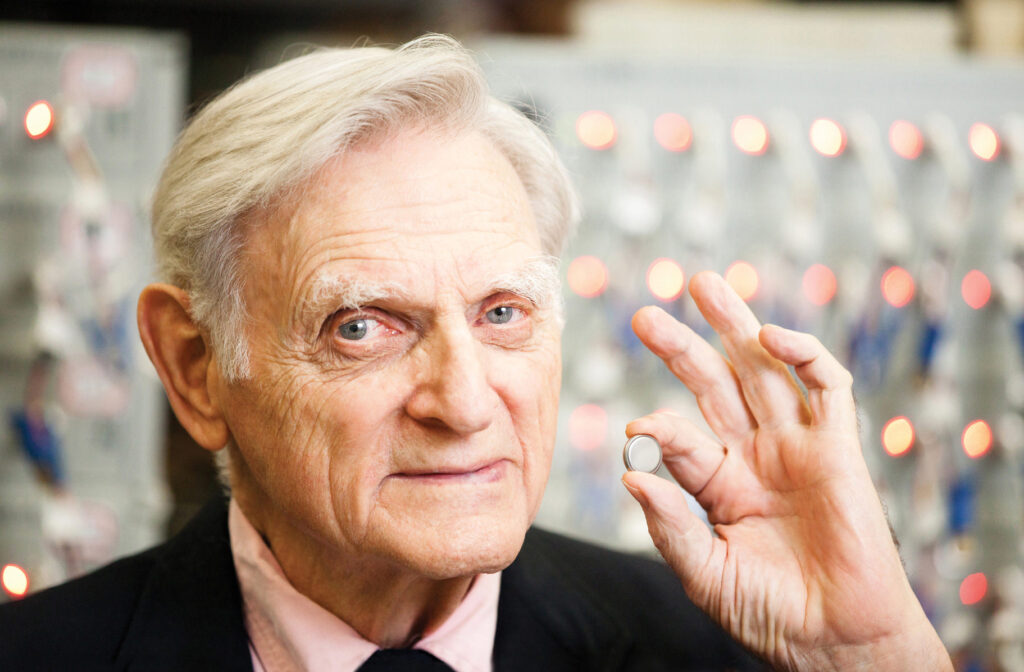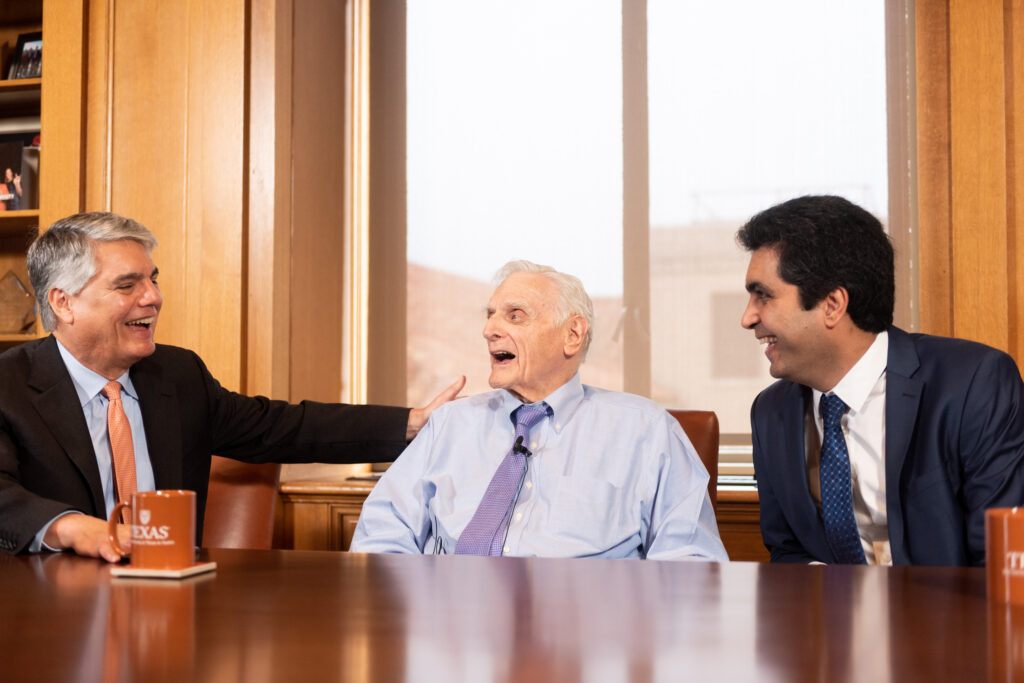
John Goodenough has seen a lot of change in his 97 years. When he began his career in 1952, power tools only had gasoline engines, computers were as big as buses and cell phones were the stuff of science fiction. He couldn’t have known at the time that his work would enable the creation of portable electronics and eventually land in the pockets of billions of people across the globe.
Goodenough’s work developing the lithium-ion battery has changed our lives forever, and yet he somehow remains modest about his discovery — even after being awarded the 2019 Nobel Prize in Chemistry.
“Live to 97 and you can do anything,” he said. “I’m honored and humbled to win the Nobel Prize. I thank all my friends for the support and assistance throughout my life.”
When the Nobel Foundation announced on October 9 that the prize in chemistry would go to Goodenough — jointly with Stanley Whittingham of the State University of New York at Binghamton and Akira Yoshino of Meijo University — the entire UT campus was abuzz. The prize is a distinction that makes anyone proud to be a Longhorn.
“Billions of people around the world benefit every day from John’s innovations,”said Gregory L. Fenves, president of The University of Texas at Austin and former dean of the Cockrell School. “In addition to being a world-class inventor, he’s an outstanding teacher, mentor and researcher. We are grateful for John’s three decades of contributions to UT Austin’s mission.”

Goodenough, who was born in 1922, identified and developed the critical cathode materials that provided the high-energy density needed to power electronics like mobile phones, laptops and tablets, as well as electric and hybrid vehicles. His work ultimately initiated the worldwide wireless revolution. In 1979, he showed that by using lithium cobalt oxide as the cathode of a lithium-ion rechargeable battery, it would be possible to achieve a high density of stored energy with an anode other than metallic lithium. This discovery led to the development of carbon-rich materials that allow for the use of stable and manageable negative electrodes in lithium-ion batteries.
“John is an extraordinary man and engineer, and I am delighted that his world-changing work is being recognized with the Nobel Prize,” said Cockrell School Dean Sharon L. Wood. “Everyone in the Texas Engineering community — our faculty, staff, students and alumni around the world — are proud of his accomplishment and inspired by the example he has set.”
Goodenough began his career at the Massachusetts Institute of Technology’s Lincoln Laboratory in 1952, where he laid the groundwork for the development of random-access memory (RAM) for the digital computer. After leaving MIT, he became professor and head of the Inorganic Chemistry Laboratory at the University of Oxford. During this time, Goodenough made the lithium-ion discovery. In 1986, he joined UT Austin, where he serves as the Virginia H. Cockrell Centennial Chair of Engineering in the Cockrell School. He holds faculty positions in the Walker Department of Mechanical Engineering and the Department of Electrical and Computer Engineering.
Goodenough received a bachelor’s degree in mathematics from Yale University in 1944 and holds a doctorate in physics from the University of Chicago. He is the recipient of numerous national and international honors, including the Japan Prize, the Enrico Fermi Award, the Charles Stark Draper Prize and the National Medal of Science.
At 97 years old, the quick-witted professor still comes to work every day. You can hear his infectious laugh reverberate through the halls of Texas Engineering buildings. He and his team of students and researchers continue to push the boundaries of materials science with the goal of inventing more sustainable and energy-efficient battery materials.
Live to 97 and you can do anything.”
— John Goodenough
A better battery may be on the horizon, but John Goodenough’s work laid the foundation. Without it, our world would be a much less connected, informed and sustainable place.
In the words of the Nobel Foundation, about the recipients, “They created a rechargeable world. Through their work, they have created the right conditions for a wireless and fossil fuel-free society, and so brought the greatest benefit to humankind.”
Goodenough joins physicist Steven Weinberg as one of two current Nobel laureates at UT Austin. Weinberg won the prize in 1979 for contributions to the theory of the unified weak and electromagnetic interaction between elementary particles. Two other UT Austin professors, both now deceased, also won Nobel Prizes: Hermann J. Muller in medicine and physiology (1946) and Ilya Prigogine in chemistry (1977). Alumnus J.M. Coetzee won the Nobel Prize in literature (2003). Two UT Austin alumni have also won Nobel Prizes during the past two years, Michael Young and Jim Allison, who respectively won the prize for medicine or physiology in 2017 and 2018.